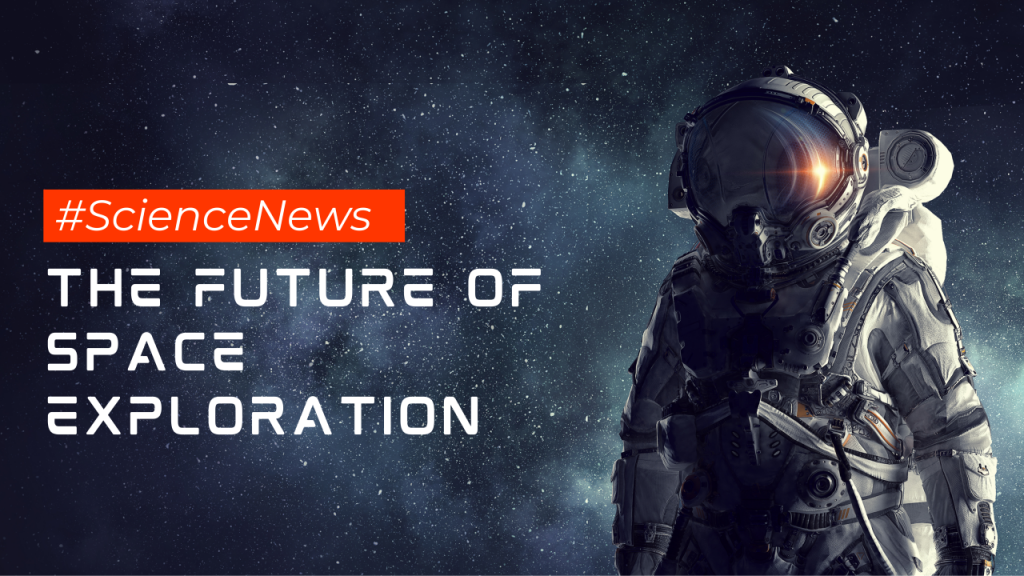The Future of Space Exploration: Beyond Boundaries and into the Cosmos
Space exploration has entered a thrilling new era, driven by rapid technological advancement, ambitious private enterprises, and bold international collaborations. The 21st century has already witnessed milestones once considered science fiction, from Mars rover landings to SpaceX’s reusable rockets. Yet, the journey has only just begun. With new goals that push human presence farther into the cosmos, here’s a look at the transformative trends and projects that will define the future of space exploration.
1. Human Missions to Mars: The Next Great Leap
After the Moon landings of the 20th century, Mars has become the next tantalizing target for human exploration. NASA’s Artemis program, which aims to establish a sustainable lunar base, is viewed as a preparatory stage for eventual Mars missions. Meanwhile, Elon Musk’s SpaceX is developing the Starship rocket with Mars colonization in mind. Starship’s heavy-lift capabilities, alongside a series of planned crewed test flights, signal that the goal of sending humans to Mars by the late 2030s may soon become achievable.
Mars holds the promise of long-term scientific discovery: its geology and climate history could illuminate details about early life and planetary formation. However, Mars missions face enormous challenges, from radiation exposure to the physical and psychological demands of long-duration space travel. Addressing these issues will require new protective materials, advanced propulsion systems, and life support technologies, all of which are actively being developed.
2. The Rise of Lunar Exploration: A Staging Ground for Deeper Space Missions
Returning to the Moon has become an international priority. NASA’s Artemis program aims to establish a lunar gateway and a base at the lunar south pole, where ice deposits can be tapped for water, oxygen, and hydrogen fuel. Not only will these resources sustain human life, but they could also serve as building blocks for fuel, reducing the need to transport supplies from Earth.
Several nations, including China, Russia, and the European Union, are also making strides in lunar exploration. China has already achieved a soft landing on the far side of the Moon with its Chang’e-4 mission and is developing plans to establish a robotic research station on the lunar surface. A Moon base could become the central hub for preparing astronauts for long-term stays in space, testing habitats and tools needed for Martian missions, and even launching spacecraft from the Moon’s weaker gravitational field.
3. International Collaboration and Space Treaties
As space becomes more accessible, international collaboration will be key to sustainable exploration. The 2020 Artemis Accords—signed by the United States, Canada, Japan, and several European nations—aim to establish standards for lunar exploration and resource management. Other spacefaring countries, including Russia and China, are developing partnerships that could contribute to or complement the International Space Station (ISS) and future missions.
However, the intensifying interest in space also raises questions around sovereignty, resource extraction, and debris management. To maintain peaceful and ethical development in space, new treaties and policies will be needed to regulate activities and ensure fair access to resources.
4. Private Space Companies: Revolutionizing Access and Innovation
Once exclusively the domain of government agencies, space exploration is now a thriving industry with ambitious private companies at the forefront. Companies like SpaceX, Blue Origin, and Rocket Lab have transformed spaceflight by developing reusable rockets, reducing launch costs, and opening up new possibilities for frequent and affordable missions.
Space tourism is quickly becoming a reality, with companies like Virgin Galactic and Blue Origin offering short trips for wealthy adventurers. As the industry matures, space hotels, lunar excursions, and even interplanetary travel could become viable options. These commercial endeavors are not just about recreation; they also contribute valuable revenue and technology development that can support scientific missions, infrastructure development, and resource exploration.
5. Deep Space Exploration and Search for Life Beyond Earth
Space exploration is also about answering some of humanity’s oldest questions: Are we alone in the universe? Missions like the James Webb Space Telescope (JWST), launched in 2021, and NASA’s upcoming Europa Clipper are focused on identifying habitable environments on exoplanets and within our own solar system.
Europa, one of Jupiter’s moons, has an ice-covered surface that scientists believe may conceal a subsurface ocean. The conditions there could potentially support microbial life. Likewise, Saturn’s moon Enceladus has shown evidence of water plumes that could indicate habitability. Planned missions to these moons will send back data that could reshape our understanding of life’s origins and the potential for extraterrestrial ecosystems.
6. Advanced Propulsion Systems and Space Habitats
For humanity to venture deeper into space, new propulsion systems are crucial. NASA and other agencies are exploring nuclear thermal propulsion, which could cut travel time to Mars significantly compared to conventional chemical rockets. Likewise, ion propulsion and solar sails are being developed for deep-space probes, promising more efficient journeys across the vast distances of the solar system.
Additionally, space habitats will play a critical role in long-term exploration. The development of inflatable habitats, radiation-shielded modules, and artificial gravity environments will be essential for maintaining astronaut health and safety on prolonged missions. Companies like Bigelow Aerospace and NASA’s own Habitat Demonstration Unit are already experimenting with prototype habitats that could one day be used on Mars or in interstellar travel.
7. The Role of AI and Robotics in Space
Robots and AI will be central to future space exploration, serving as tools for surveying dangerous environments, conducting repairs, and even assisting astronauts. Autonomous rovers, such as NASA’s Perseverance rover on Mars, have provided critical geological data and supported sample-return missions that could bring Martian soil back to Earth. Advanced robots and drones could be tasked with exploring extreme environments, like the volcanic landscapes of Venus or the icy depths of Europa.
AI is also helping to process the vast amounts of data generated by space missions. Machine learning algorithms are analyzing exoplanet data from telescopes, identifying new planets, and classifying potential biosignatures. As AI technology advances, it will play an increasingly important role in managing spacecraft, conducting autonomous missions, and accelerating discoveries.
8. The Search for Resources and Space Mining
The Moon, Mars, and asteroid belts contain valuable resources such as water, metals, and rare minerals. The potential to extract these materials could make space missions more self-sufficient and economically viable. Asteroids, rich in metals like platinum and nickel, could be mined to provide essential materials for building space habitats or creating fuel.
Space mining is still in its infancy, but companies like Planetary Resources and Deep Space Industries have already initiated plans to develop asteroid mining technology. While this could unlock tremendous economic potential, it also raises ethical and legal questions about ownership and environmental impacts. International policies will be needed to regulate space mining, ensuring responsible and equitable resource use.
Conclusion: A New Space Age Awaits
The future of space exploration promises to be dynamic and multifaceted, with breakthroughs in propulsion, habitat design, AI, and resource utilization reshaping what’s possible. As we look toward Mars, the Moon, and beyond, humanity’s reach into the cosmos will continue to inspire curiosity, technological progress, and international unity. Balancing ambition with responsibility will be key, allowing us to explore, discover, and ultimately protect our shared future among the stars.


